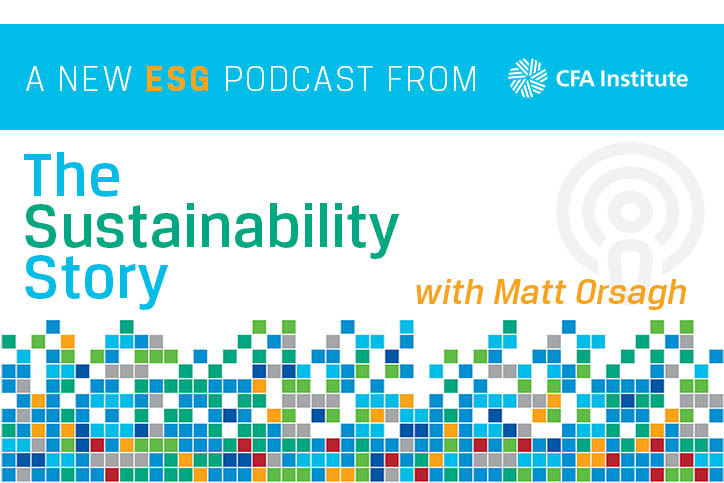Fighting Global Warming Through Carbon Markets
The following post summarizes some key ideas from a recent edition of the CFA Institute podcast The Sustainability Story. CFA Institute Senior Director Matt Orsagh, CFA, CIPM, spoke with CEO and co-portfolio manager of Carbon Cap Management, Michael Azlen, about carbon pricing and emissions trading systems (ETS).
Carbon markets were born out of necessity to address global warming, which presents an existential threat. The fundamental principle of a carbon market, according to Carbon Cap Management CEO Michael Azlen is to harness the power of the markets to achieve an environmental objective.
A market-based approach to carbon emissions started about 25 years ago. The first projects were voluntary, during which time the benefits of planting trees were monetized by selling credits. And while it successfully launched the idea of using a market-based mechanism to solve global warming, voluntary carbon markets have remained relatively small, unregulated, and illiquid.
The focus has shifted to the bigger and highly regulated compliance-driven carbon markets, says Azlen. A compliance carbon market is designed to achieve two objectives: (1) to cap and lower carbon emissions, and (2) to achieve the first objective at the lowest cost to society. This is achieved by issuing carbon allowance certificates to participants in a variety of markets that decline over time. Allowances typically drop by 2% to 4% per year, further incentivizing companies to reduce and ultimately stop emitting carbon.
The European Union launched its carbon market covering about 1.5 billion tons of annual emissions in 2005, and globally, more countries are actively launching carbon markets. In the United States, California has an active Cap-and-Trade Program, and 11 eastern states now participate in the Regional Greenhouse Gas Initiative. China also has entered the market. Azlen estimates these initiatives will increase carbon’s daily traded value to between $5 and $10 billion. Furthermore, other experts believe carbon could become more heavily traded than oil.
For those who want to own the asset class, Azlen’s suggestion is to diversify. In his paper, “The Carbon Risk Premium,” he found that carbon markets exhibit very low cross-correlation. Azlen notes that this is due to limited cross-fungibility from one carbon market to another. Over the past seven to eight years, the value of carbon credits has been going up at an annualized rate of return of about 20% per year with about 20% volatility.
Azlen believes that we can harness the power of markets to address not only climate change but also other social inequities. He is hoping that liquidity in carbon markets will encourage capital flows to address more than simply the economics of investing.
Listen now: The Sustainability Story on Apple Podcasts

